Here’s an attempt to condense the entire 1500 V2 review into a couple of paragraphs. Here goes:
The 1500 V2 is built on the excellence of the outgoing V1, changing almost nothing of what made the original 1500 great. Things like the combination of a near perfect upper fit paired with a fast but adequately padded midsole has remained untouched.
On top of all that, the V2 brings in a few additions of its own, which only ends up making the fit and ride combination even better.
So there you have it, the gist of what this shoe is all about. You need to read no further, unless you want to. Come for the review; stay for the pictures. That’s how this works.
The way we see it, the New Balance 1500 is positioned between a traditional daily trainer and an all-out racing flat.
Which means that while the 1500 lacks the generous cushioning found in more built-up models, it doesn’t feel like running with nearly nothing between your foot and the ground. Ultra thin midsoled flats tend to do that; and one wishes that there was a shoe which felt fast and distraction free yet with adequate padding.

The midsole is far from being an example of stripped-down minimalism; it packs in ample cushioning for its weight class.
This is where the 1500 comes in. Looking at it sideways reveals a minimal profile, but actually the shoe is anything but. There’s a relative abundance of midsole foam below, and that’s mated to a supportive and an all frills upper.
Outsole rubber is applied liberally, and New Balance relies on the time tested combination of harder rubber under the heel and soft nubs in the front.
As called out in our review of the first generation 1500, this particular shoe also happens to be one of the few models to offer a firmer medial post in this category. Not that the firmer component is noticeable – even less so on the V2 for reasons we’ll explain – but this design aspect is an element of differentiation for sure.
There are plenty of New Balance lightweights going around nowadays, mostly in the form of many Vazee variants. This can be confusing for some, so the 1500 V2’s somewhat unique ride and upper fit characteristics help separate it from the rest.
One of the traits the 1500 shares with a bulkier trainer is its range of use. If you want our personal opinion, we don’t think that 1500 V2 possesses enough padding to go a full marathon distance, but for half and below, it’s perfect.
The shoes works great for speedy track workouts, 5K’s, 10K’s and up to twice that distance. The NB 1500 is still made of good ol’ EVA foam, so while you can’t expect Boost levels of responsiveness, the dual density foam midsole gets the job done.
We’ll jump into the making of the 1500 V2 midsole and how it differs from last year’s version. But first, we’ll spend some time poring over the upper. Because besides the fit quality, this year’s upper change(s) have a bearing on how the midsole feels. Yup, that happens every now and then, and we’ll tell you the how and why soon.
The 1500 V2 is based on the same visual template as the V1, so much so that if you did not pay close attention, you might mistake the V2 for another color of the V1.
Much like the V1, the 2016 New Balance 1500 V2 makes use of no-sew layers which is a part of the design language which the brand calls ‘Fantomfit’.
Sure, the pattern shapes and the way they have been applied to the V2’s upper has changed, but it yields a similar visual outcome. The large ‘N’ logo and faux-slub heel textile are a straight lift from the previous 1500.
Now that we’ve established that the look and feel is close to the 2015 model, what’s new from a functional viewpoint?

Look ma no slide! The 1500 V2 now comes with an inner gusset or half-sleeve to keep the tongue in place.
Well, for starters, the 1500 V2 has something which the V1 did not – an inner gusset to tether the tongue to either sides.
Not that tongue slide was an issue observed on the V1; the narrow lacing and lace-loop managed things rather well the last time around.

1) Lacing inches further towards the toe 2) The tongue now comes attached via sleeves on either sides 3) Same collar lining as the V1
Secondly, the lacing now starts slightly early on the forefoot, with the first row inching closer to the tip. The first row also acquires something which the V1 lacked – a loop with reflectivity on it. This is in no way an additional reflective trim, however. It just substitutes the now missing sliver on the V1’s toecap.
Other than that, the ‘Fantomfit’ layers splay out wider on the small toe side. So does all this affect the quality of the upper fit? Yes, they do.
Obviously, the new mini-sleeve makes the midfoot snugger. It does so without discomfort, because the material is made of a spandex-y stretch material. The sleeve also ends up doing a couple of other things.
There is a taped seam placed vertically on the inner midfoot, an element which we saw in the 1500 V1 as well. While it was never an issue on the V1, the new sleeve makes doubly sure to neutralize it. The second result was somewhat unexpected, because the sleeve affected the 1500 V2’s ride.
The 1500 has a firmer density medial post, and since the midsole has a slim profile, it is expected that you’ll feel the midsole edge after a few miles. The 1500 V1 came with this faint feel, but on the V2 it is completely gone. It took us a while to figure out why.
Both the V1 and V2 share the same removable insole. Nice fabric topping, compression molded EVA with perforations in it, the usual suspects.
That said, the newly introduced sleeve makes one important adjustment to the placement of the sockliner.
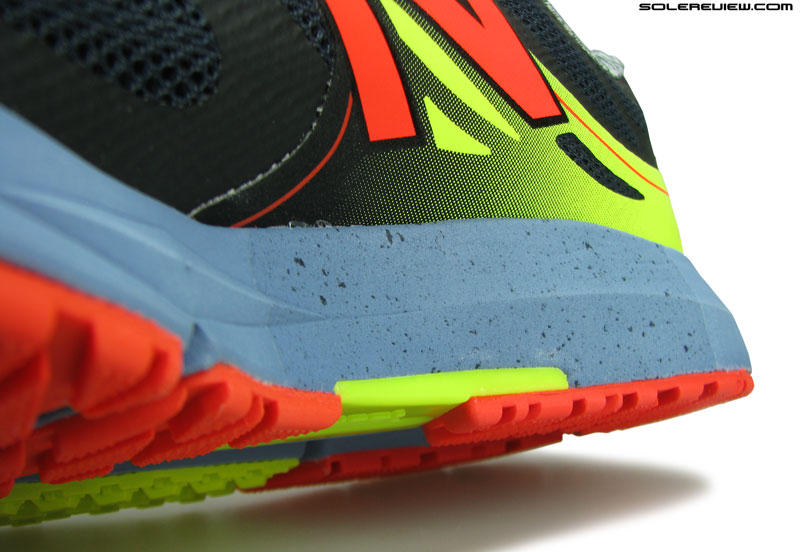
On the V1, one experienced a dull pressing sensation caused by the firmer midsole edge. The V2’s sleeve takes care of that.
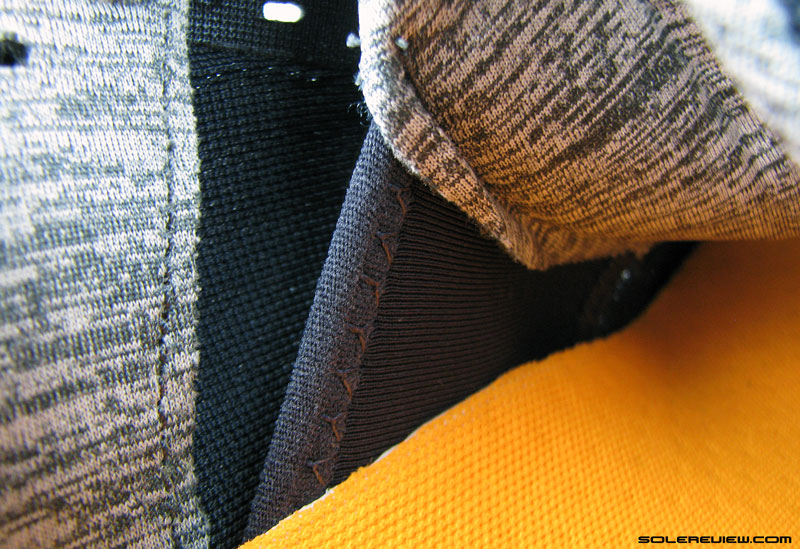
The elastic sleeve not only acts as a barrier between the foot and midfoot, but also lifts the insole edges inside the midfoot. This helps cushion the foot against the firm midsole foam.
It pulls up the insole edges around the midfoot area, as opposed to the V1 insole which lay flatter due to the lack of a sleeve. By doing so, the V2’s sleeve puts the insole foam between the foot and the hard midsole edge. This completely cancels the sensation of the midsole edge pressing into the foot after a few miles.
Strange how things work, huh? On a side note, the new sleeve and the updated foam density adds a few extra grams to the 1500 V2. It is now 11 grams or 0.4 oz heavier when compared to the V1.
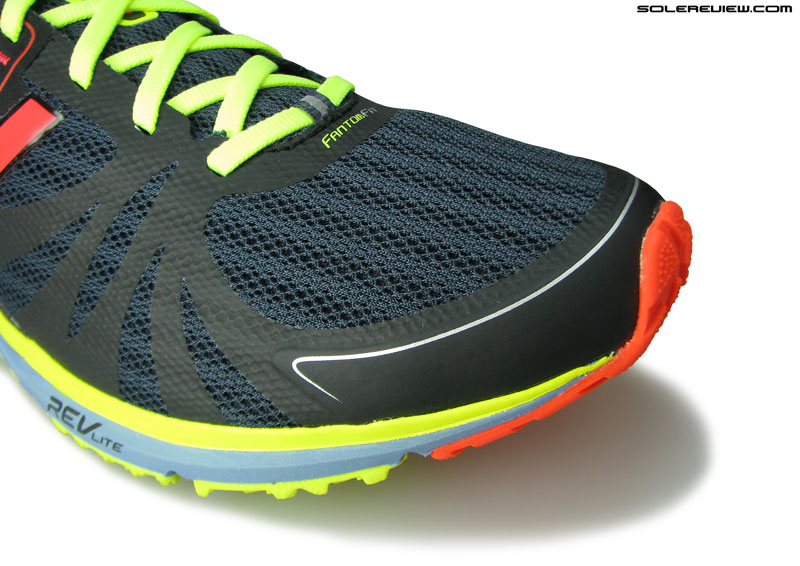
The no-sew Fantomfit layers on the outer side (just above the Revlite logo) splays out wide, making the forefoot a bit snugger on that side.
The forefoot gets a little snugger, solely due to two reasons. The updated application of no-sew layers splays out wider on the outer (small toe) side, reducing the amount of exposed mesh. This change hems in the foot on the lateral side by a wee bit.
As mentioned earlier, the lacing moves forward towards the toe, hence cinching more of the forefoot than the V1. This also helps makes the shoe snugger. But there’s no harm done, really.
If you were a fan of the 1500 V1’s fit, then rest assured – the V2 hasn’t done much to upset it. The fit is a 90% match with the original 1500.

1) Forefoot gets marginally snugger 2) Midfoot fit has more hold due to the inner sleeve 3) No change in heel fit
Upper fit was the original V1’s forte, and we echo the same sentiment with respect to the V2. Unlike other racing shoes which tend to have a very narrow forefoot fit, the 1500 sticks to making the fit just right. It is snug, but without any random hot-spots.
The entire upper has a nice, consistent spread of fit pressure, which is a rarity these days. Even other New Balance shoes such as the Zante do not achieve this fit perfection.
On an overall level though, it won’t be wrong to say that New Balance footwear offers perhaps the best upper fit of all brands. And not to mention, for a long time their USP has been the availability of optional widths across most models – something which even well established brands such as adidas and Nike don’t offer.

1) Forefoot is more rigid than the V1 2) No change in medial post 3) Midsole foam firmer than the V1
There aren’t many changes made to the low profile sole unit. The V2 upper we just wrote about still comes glued to the same dual density midsole, a half-shank and an updated rubber outsole.
It’s worth calling out only two changes – one is the slight firming up of the midsole foam and the second is the outsole design.
The firmer medial posting remains untouched – only the foam around it has changed. The V2’s foam has a little more firmness to it than the V1 did. That however, is compensated by the softer insole resting just above it.
That makes the net ride effect the same as the V1, except that the V2’s cushioning softness has a top heavy feel to it as opposed to bottom focused.
Some runners might be concerned that the 1500 isn’t ‘neutral enough’ due to the presence of a medial post. Let that not put you off in buying the 1500 V2 – the medial post is really negligible in its capacity to change ride behavior.
The medial post wasn’t noticeable in the V1, and the same is true for the V2 as well. One need not worry, regardless of what some people might tell you.
And yes, about the outsole change. The underside of the V2 comes with a minor update; one side of the forefoot has a different pattern of rubber. Instead of the small rubber nubs, there are now diamond shaped lugs on the medial forefoot and front. This mirrors the design used on the rear outsole.
Does this affect the ride? Not really. While the smaller nubs run better on synthetic track, the change does not influence how the 1500 V2 performs on road. If anything, the new design appears more durable. There was decreased initial rubber wear seen with this new forefoot design versus the V1.
The rest of the outsole stays the same. There’s a deep transition groove running down the center to keep the ride supportive, and there’s a plastic half shank which was seen on the V1. The forefoot is a bit lower on flexibility compared to the V1 owing to the firmer midsole and reconfigured outsole. Again, not necessarily a negative factor.
We don’t need to spell it out for you that the 1500 V2 is every bit as good as the V1, and then some. It is the same fast and lightweight shoe you came to love – with an improved fit.
So if you missed out on getting the most excellent 1500 V1, the 2016 V2 is literally your second chance.
(Disclaimer: For this review, solereview bought the shoe at full US retail price.)
Looking to upgrade your 2015 New Balance 1500 V1 to the latest version, but not sure how the 2016 model compares? We can help here. The following infographic is a ready-reckoner for what changes you might expect in the new model vs. old. To make this more fun, we’ve put in a system of percentage match, which calculates a weighted average for a set of attributes.
A higher or lower match percentage is neither good or bad. The % number just tells you how similar or distanced the new shoe is from the previous version. Total match % is a result of weighted averages.



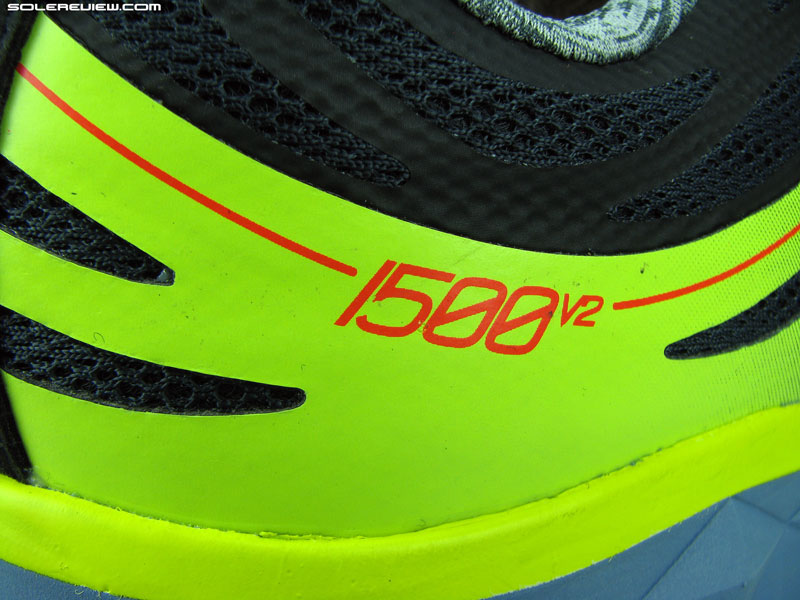
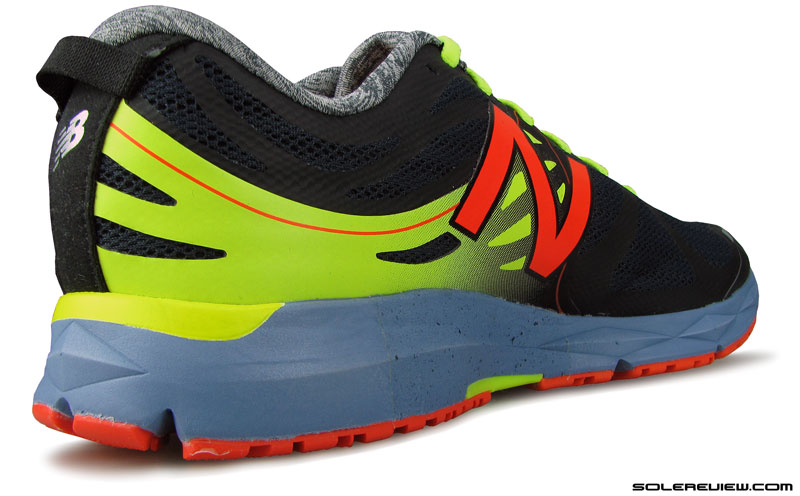


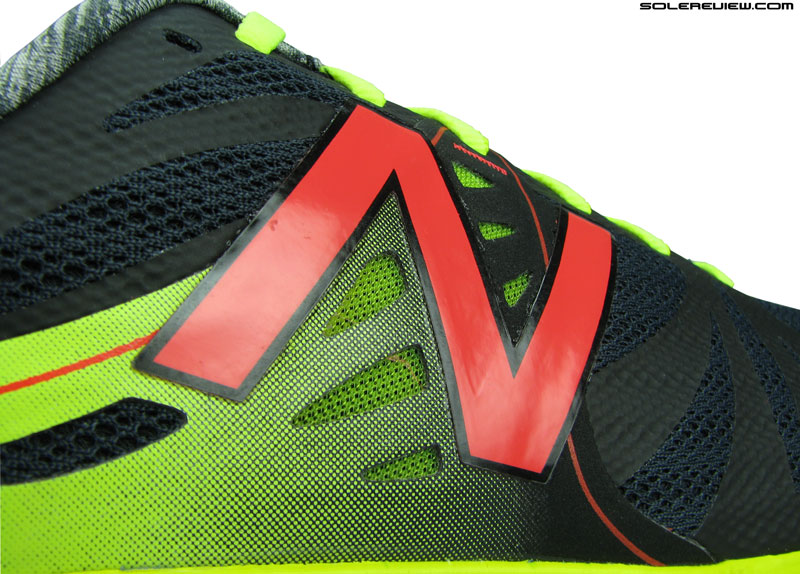




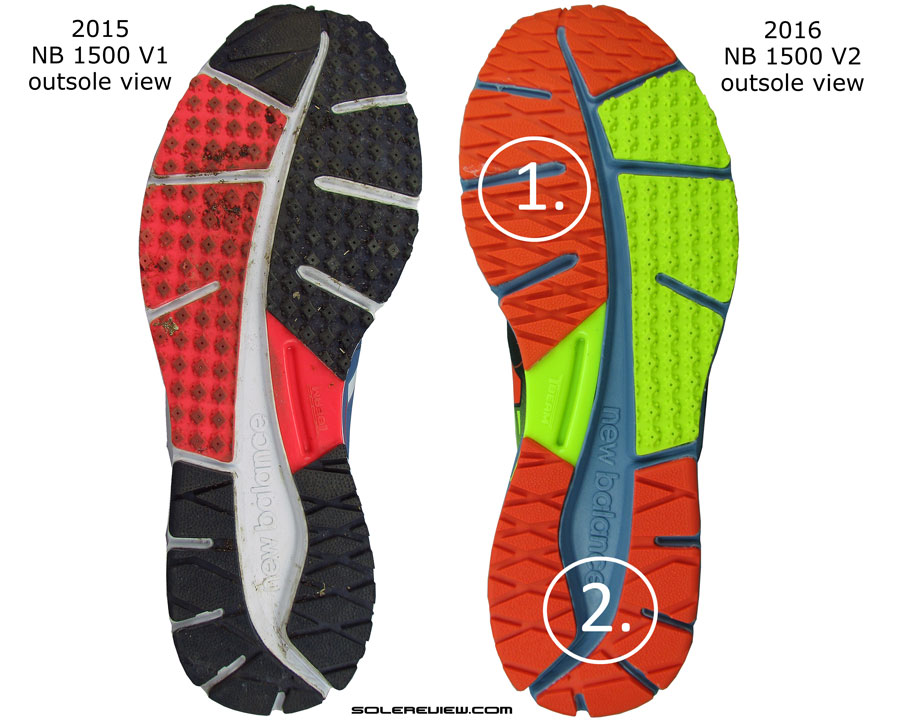



2 comments
Hello,
I own and like the 1500v2. The best thing about it, in my opinion, is how it holds my foot securely and comfortably around the mid foot. Second best would be how it’s light, but still has enough cushioning for my taste.
At the beginning, the medial post was quite noticeable for me, though. As much that I first thought it would be a show-stopper. But by now, I’ve either grown used to it, changed my running form a bit, or it’s become softer over time. It’s not a problem any more.
I also run the 1400v2, for fast trainings and races, and prefer it a bit for its total neutrality. Besides, it’s noticeably lighter than the 1500v2, and the fit is very similar. But then, it’s not a shoe for long runs, where the 1500v2 works just fine for me.
Bottom line: A great shoe, but it took some getting used to.
Cheers
Kaspar
Appreciate the feedback!
Comments are closed.